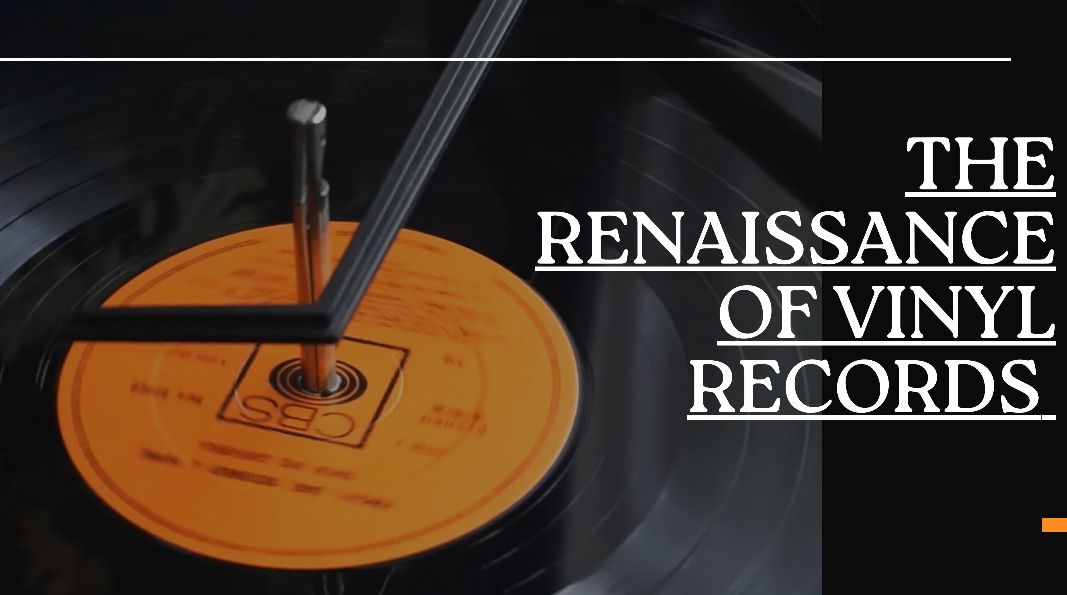
In an age dominated by digital streaming and instant access to music, one might assume that vinyl records would have long been relegated to the annals of music history. However, a surprising and enduring renaissance of vinyl records has taken the music industry by storm. In this article, we will delve into the resurgence of vinyl records in the digital era, exploring the factors driving their revival and uncovering why listeners are increasingly turning back to analog music.
I. The Resilience of Vinyl Records
Vinyl records, those grooved platters of analog sound, have defied obsolescence for decades. Despite the rise of cassette tapes, CDs, and digital downloads, vinyl records never completely disappeared. Their unique charm and auditory appeal remained a niche interest for collectors and audiophiles, but the recent resurgence extends far beyond these loyal enthusiasts.
1. Tangible and Collectible
One of the enduring appeals of vinyl records is their tangibility. In an age where digital music lives in the cloud and on hard drives, vinyl records offer a physical connection to music. Collectors and music enthusiasts appreciate the tactile experience of handling records, inspecting album artwork, and reading liner notes. For them, vinyl records are not just a means of playing music but also collectible art pieces.
2. Analog Warmth and Sound Quality
Vinyl records produce a distinct and warm sound that digital formats often struggle to replicate. Many audiophiles and musicians argue that analog audio quality provides a richer, more organic listening experience. The subtle imperfections of vinyl, such as pops and crackles, add a certain character and nostalgia to the music.
3. Album Artwork and Liner Notes
Vinyl records showcase album artwork in a way that digital formats cannot match. The large, high-resolution cover art and accompanying liner notes provide a deeper connection to the music and the artists. Collectors appreciate the effort put into the visual aspects of vinyl records.
II. The Digital Age and the Quest for Authenticity
The resurgence of vinyl records can be viewed as a reaction to the ubiquity of digital music. In the digital age, there is an increasing thirst for authenticity and a desire to counteract the intangibility of streaming services. Vinyl offers a refreshing contrast to the convenience of digital music.
1. Tangible Ownership
In an era where music is streamed from the cloud, ownership of a physical copy of an album provides a sense of permanence and control. Vinyl records symbolize a tangible connection to the music, and this ownership is valued by many who grew up in the age of physical media.
2. A Break from Endless Playlists
Digital music streaming often encourages algorithmically generated playlists and endless recommendations. Vinyl records offer an escape from the never-ending shuffle. Listeners are forced to be more intentional, selecting a specific album and side, which can lead to a more immersive listening experience.
3. The Joy of Collecting
Vinyl records have fueled a resurgence in the hobby of music collecting. The act of searching for rare and vintage records, attending record fairs, and building a physical music library is an enticing prospect for enthusiasts. It provides a sense of adventure and discovery that digital music catalogs can’t quite replicate.
III. Vinyl’s Appeal to New Audiences
The revival of vinyl records is not solely driven by nostalgia. A surprising number of younger listeners, who have grown up in the digital age, are embracing vinyl records. This trend is challenging the stereotype that vinyl is a relic of the past.
1. The Hipster Aesthetic
The appeal of vinyl records has been intertwined with a certain “hipster” culture. Younger generations often gravitate towards vintage or analog experiences, appreciating the aesthetic and ritual of playing vinyl records. This trend is especially visible in urban centers, where vinyl record shops are thriving.
2. A Rekindled Passion for Music
Younger listeners are discovering the physicality and ritualistic nature of vinyl records. The act of flipping the record, adjusting the tonearm, and gently placing the needle on the groove demands engagement with the music. For many, this is a profound and rewarding experience that deepens their connection to the music.
3. Vinyl as a Form of Rebellion
In a digital world dominated by algorithms and curated playlists, vinyl records represent a form of rebellion. It allows listeners to take control of their musical journey, choosing albums that resonate with their individual taste, free from the algorithms that often dictate what we should listen to.
IV. Industry Support and Artist Participation
The music industry has recognized the renewed interest in vinyl records and is responding to the demand. Artists, both established and emerging, are increasingly releasing their music on vinyl. Special limited-edition vinyl pressings and reissues of classic albums are also in high demand.
3. Vinyl as a Form of Rebellion
Record Store Day, an annual event dedicated to celebrating the culture of independently owned record stores, has played a significant role in the vinyl revival. It brings together artists, record labels, and music enthusiasts in a celebration of vinyl records. Exclusive releases and live performances have become a hallmark of the event.
2. Artists Embrace Vinyl
Musicians and bands across genres are embracing vinyl as a medium for their music. Vinyl releases are often accompanied by unique packaging, colored vinyl variants, and special bonus tracks. Artists recognize the value of offering their fans a physical, high-quality product.
V. The Environmental Consideration
While vinyl records are celebrated for their tactile qualities and audio warmth, there are valid concerns regarding their environmental impact. The production and disposal of vinyl records raise ecological questions, but initiatives are emerging to address these concerns.
1. Vinyl Recycling and Sustainability
Sustainability has become a growing concern in the vinyl industry. Some companies are working to recycle vinyl records, repurposing them for future use. Additionally, efforts are being made to reduce waste in the production and distribution of vinyl records.
2. Carbon Offsetting and Eco-Friendly Packaging
To mitigate their environmental footprint, some record labels are investing in carbon offsetting programs. Eco-friendly packaging and sustainable vinyl production methods are being explored to reduce vinyl’s impact on the environment.
The resurgence of vinyl records in the digital age is a testament to the enduring appeal of analog music. Whether it’s the tactile experience, the analog warmth, the quest for authenticity, or a desire to escape the algorithms of streaming, vinyl records have made a triumphant return. Their appeal extends to both long-time collectors and a new generation of music enthusiasts.
The vinyl renaissance is not just a revival; it’s a cultural statement. It reflects the diverse ways in which music is experienced and appreciated in a world where technology has transformed the way we interact with art. As vinyl records continue to spin on turntables around the world, it’s clear that their unique charm and enduring legacy are here to stay, offering a bridge between the past and the digital future of music.









![Read more about the article [Weekly funding roundup] Venture capital inflow remains steady](https://blog.digitalsevaa.com/wp-content/uploads/2022/11/funding-roundup-LEAD-1667575602969-300x150.png)
